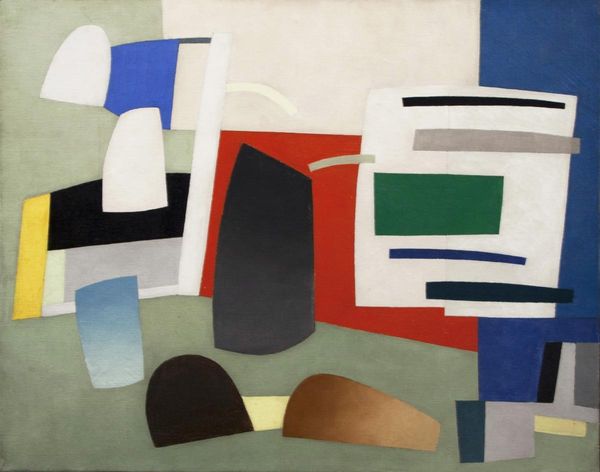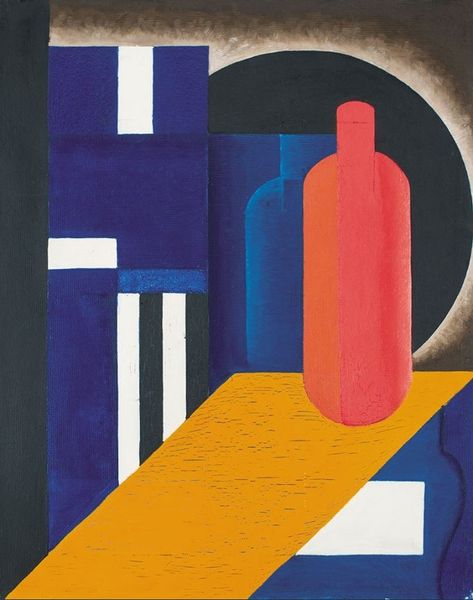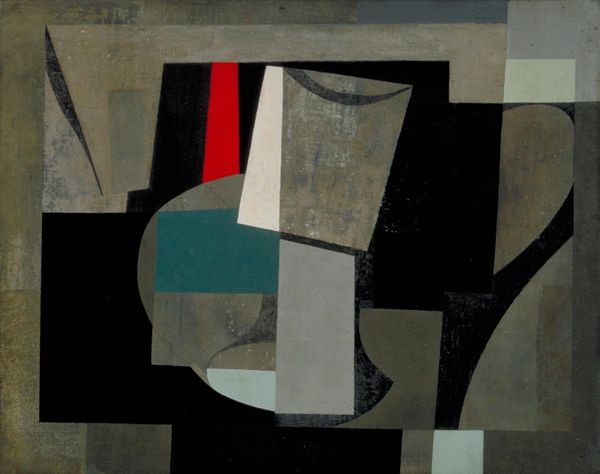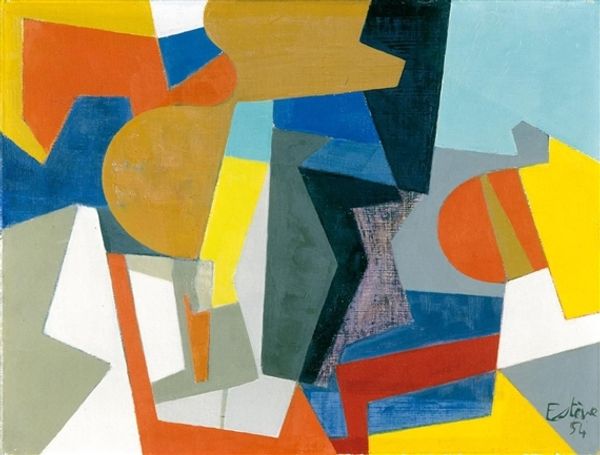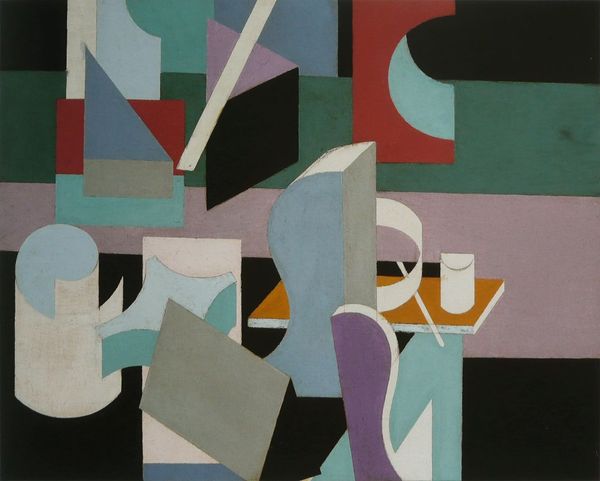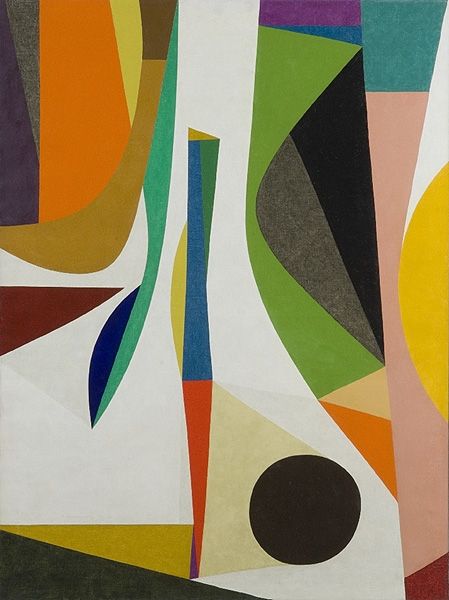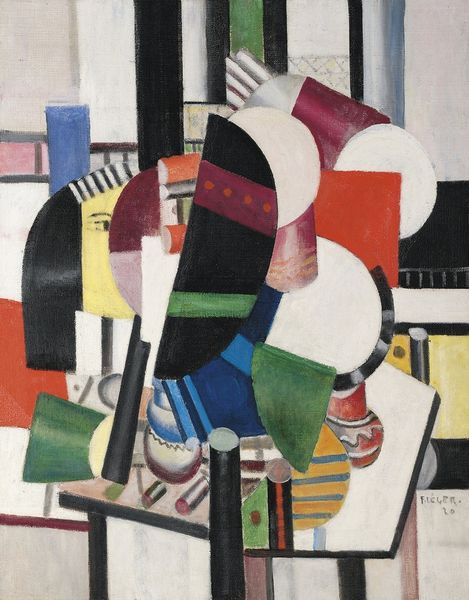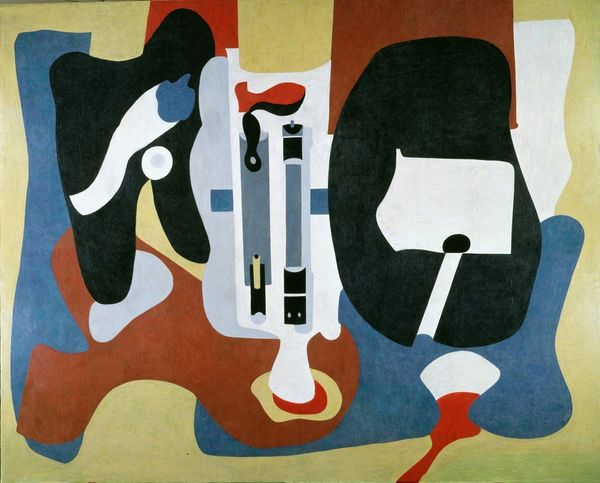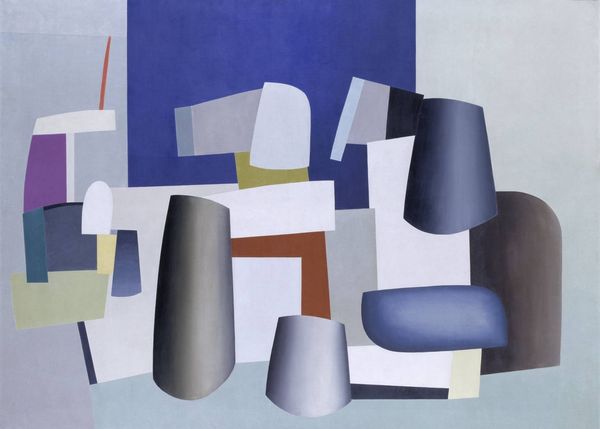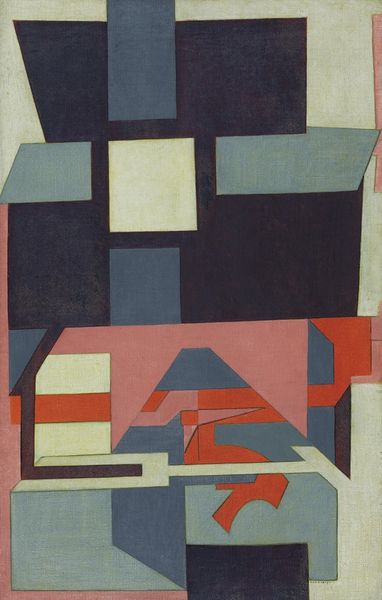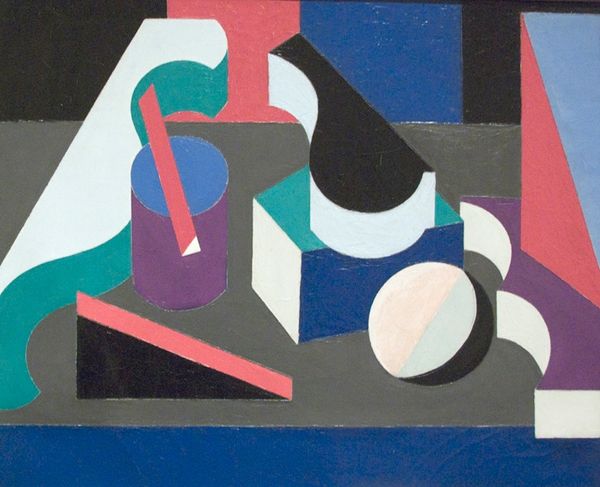
painting
#
cubism
#
purism
#
painting
#
form
#
geometric
#
abstraction
#
line
#
modernism
Copyright: Public domain
Curator: Let's discuss this boldly geometric work by Patrick Henry Bruce. It's simply titled "Painting" and was created around 1930. Editor: It strikes me as deceptively playful. There's a starkness to the hard edges and simplified forms, but the bright colors—the reds, blues, pinks—lend it a kind of buoyant energy. Curator: Precisely. Bruce was deeply involved with both Cubism and Purism, movements that sought a return to order and clarity after the emotional intensity of the early 20th century. Notice how the objects, though recognizable as cylinders, cubes, and planes, are distilled to their essential geometric forms. It reflects an impulse in interwar culture toward precision and rationality. Editor: And what about the odd little milkshake or cup with a straw? Does that play any symbolic role do you think, within the overall arrangement? Or does it offer some insight on the consumer society emerging? Curator: Potentially, the placement of objects, reminiscent of common items and daily usage suggests the emergence of mass production, offering familiarity and accessibility to people. Editor: You know, the combination of that formal austerity with these seemingly everyday shapes is fascinating. It creates this tension—a visual paradox. It’s almost as if Bruce is asking us to reconsider how we perceive the objects around us, elevating the mundane to something worthy of contemplation. Curator: Yes, this "something worthy of contemplation" also stems from what the rise of modernist aesthetic created in social dynamics. At a time when ordinary items, mundane objects, were more accessible and becoming more prevalent in homes. These pieces can then symbolize our social history of embracing functional designs and practical use within the constraints of early modernist ideals. Editor: Interesting! These clean lines, bold colours… there is a deliberate act of reducing things down to basic essentials of existence isn’t there? Stripping them of any extra historical and social significance is part of what modernism championed overall? Curator: Modernism wanted us to consider, almost scientifically, what could be achieved in the new modern world, but without necessarily rejecting what had been already made and accepted within pre-existing aesthetic standards. Editor: Looking at it now, there's a real timelessness about it as a piece and I see an ongoing engagement of shapes, colours that still is prevalent today. Curator: I concur; it highlights art's connection to shifts in socio-cultural norms during periods in our history.
Comments
No comments
Be the first to comment and join the conversation on the ultimate creative platform.

